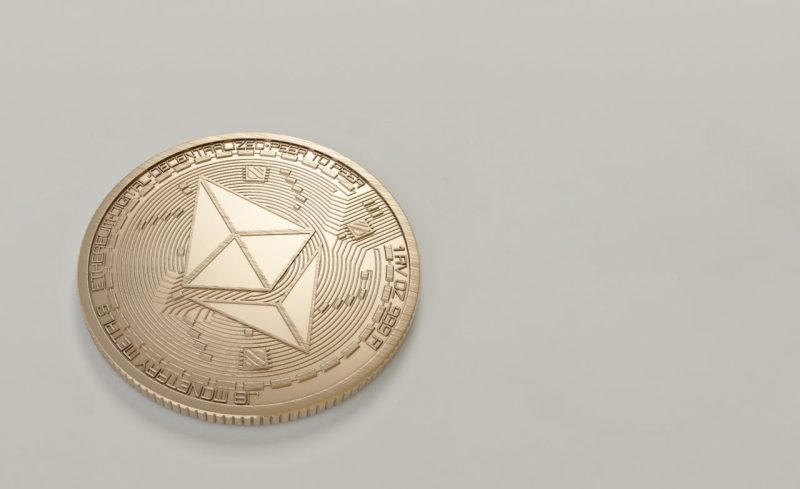Ethereum is a decentralized app (dApp) platform that runs software (apps), and it consists of a native digital currency called Ether. The Ether currency is denoted by the ETH symbol and it plays a crucial role in how Ethereum works.
Ethereum is an open-source community project designed to offer censorship resistance, full control of your own funds (Ethereum tokens can’t be frozen by a bank), and accessibility anywhere in the world. Ethereum is borderless because it is not a centralized server headquartered in any one country.
What Is Ether?
Ether is a cryptocurrency because it uses cryptography intrinsically to secure users funds, generate sending and receiving addresses, and to sign outgoing transactions. Ethereum’s built-in algorithm (called a consensus algorithm) controls the rate at which Ether tokens are created. Ether is also the currency used to pay gas fees on the Ethereum network.
What Is Ethereum Gas?
An Ethereum gas fee is the cost of the computing resources you used on the Ethereum network. Understanding gas fees is crucial to learning how Ethereum works. Ethereum gas fees pay for Ether transactions, and for your usage of dApps running on the Ethereum network. This is different from how conventional apps outside of Ethereum work, because conventional app vendors pay for the resources themselves and then find a way to recuperate that cost.
They usually do so by charging users a fee, advertising, or collecting your data and selling it to marketers. Ethereum, on the other hand, makes users pay for network resources directly. This has it’s benefits and disadvantages. This means the dApp vendor doesn’t have to worry about recuperating the cost of using the network, and it also offers transparency. Non-profit organizations and volunteers may appreciate this concept because their objective is not to make a profit off fees.
Ethereum Gas Fees: How Ethereum Gas Works
- If you are sending coins of any kind (including ERC20 tokens that run on top of Ethereum, but which aren’t actually Ether), you will have to pay gas fees. Those gas fees are to be paid with Ether tokens/coins.
- dApps may prompt you to reveal your Ethereum wallet address to identify you (for example, if you use MetaMask). This isn’t necessarily a gas fee. Always read the entire wallet prompt carefully. This may be used to ‘log in’ to a dApp or website instead of typing in a username and password.
- The gas fees fund the validator nodes.
How Is Ether Stored?
Ethereum tokens or Ether are stored in a cryptocurrency wallet, which can be a browser extension, an Android app, iOS app, Linux app, MacOS app, Windows app, or a hardware wallet. All wallet types provide their own benefits. The wallet app (or hardware wallet) simply interacts with your wallet on the Ethereum blockchain.
It is an app that handles the complex task of signing (and approving) your outgoing transactions with your Ethereum private key. Therefore your Ether tokens are not actually stored on your computer. It is your private key that is stored on your computer (or phone) and your coins are stored on the blockchain.
A copy of the Ethereum blockchain is stored on thousands of nodes’ computers around the world. This is an impressive backup strategy, as data loss is unlikely. Each node serves the purpose of verifying the authenticity of transactions to minimize the risk of coin theft. The Ethereum blockchain is also immutable to make it highly tamper evident and to maximize accountability.
When you submit a transaction, it must receive multiple ‘confirmations’ from validator nodes.. Your wallet app also displays incoming transactions, and may in some cases have a built-in browser designed to interact with dApps on Ethereum. Your interaction with the Ethereum blockchain looks a little like this (heavily simplified):
You <> Light Wallet App <> Ethereum Node <> Ethereum Blockchain
Some wallet apps (such as Mist) are both an Ethereum node and a wallet app combined. Your wallet app will display your account balance using data from the Ethereum blockchain. If you are running a full node using a wallet app such as Mist, your interaction with the blockchain looks more like this:
You <> Your Ethereum Node <> Ethereum Blockchain
A light wallet app provides the benefit of not having to download the entire blockchain. These are necessary, unless you have a phone with hundreds of GB of storage capacity. A light wallet app also entails using a middleman to interact with the blockchain (your wallet’s node provider). This creates an additional step that causes your transactions to take a bit longer.
How To Create An Ethereum Wallet
Ethereum has an ecosystem in which many dApps have their own custom tokens associated with them. These come in different varieties. The two most common varieties are ERC-20 tokens, and ERC-721 tokens. ERC-20 tokens may serve many purposes and are fungible. However, ERC-721 tokens are non-fungible (NFT) and are usually used to represent (‘tokenize’) unique assets which could be any of the following:
- Digital pets or characters inside games.
- Property inside virtual world games.
- Digital representations of physical items such as gold or other property (example: tokenized real estate).
- Land titles (theoretical/being piloted).
While NFTs are clearly built for unique assets that could either be physical or digital, ERC-20 tokens have a broad set of use cases. They are often used for:
- Digital currencies for frequent transfers.
- Digital tokens pegged to/backed by national fiat currencies (for example: TrueUSD, TrueAUD, USDT, USDC).
- Tokens for private blockchains running on top of Ethereum.
- Scaling solutions that reduce Ethereum gas fees.
- Tokens used for initial coin offerings that run on Ethereum, but will be redeemed on another network when it has launched (for example: There was an ERC-20 EOS token that was redeemed on the EOS.io main network when it was launched).
How To Send Money With Ethereum
Ether is a currency. If you have money in a bank account and want to send it to someone using Ethereum, you would trade that money for Ether via an exchange (purchase Ether tokens), and then send the person Ether tokens. To purchase Ether, you would need to find a suitable trading pair such as ETH / USD or ETH / AUD.
A trading pair is simply the option to trade two different currencies (such as ETH / USD or ETH / AUD) — ‘ETH / USD’ means ETH for USD or USD for ETH. Not all cryptocurrency exchanges enable you to trade your country’s national currency for Ether (this is called a fiat-to-cryptocurrency trading pair). What this means is that Ethereum is not a remittance service for money, it is a digital currency with its own built-in transaction processing system (TPS).
Once you have purchased your Ether tokens, you calculate how many you want to send by checking the exchange rate, and send them to the recipient’s wallet address. The wallet address is not the recipient’s private key (never send anyone your private key or ask for theirs). An Ethereum wallet address is a cryptographic hash (a long string of letters and numbers).
Convert ETH To USDC With An Exchange Rate Calculator
Ethereum Security: Protecting Your Ether Tokens (including ERC20)
The private key is used to access your own tokens and can be used to steal all of them. Only you should be in possession of your private key. A custodial solution such as an exchange or online wallet provider may store your key if you sign up with them. Using such custodial services entails trusting them not to steal your funds.
When seeking wallet apps, please try to find one that is classified as ‘non-custodial’. If you use a custodial one, you’ll have to be extremely careful with the username and password you’ll be required to log in with (your password has to be strong, and there is still a risk of the custodial service being breached).
Who Is Behind Ethereum/Or Who Runs Ethereum?
Ethereum is an open-source decentralized network run by nodes and validators and developed by volunteers in the Ethereum community. Developers submit improvements and proposals to the Ethereum core developers on GitHub via pull requests and ‘issue’ reports. One of the most prominent figures developing Ethereum is Vitalik Buterin.
You can see all of this, as well as the source code of Ethereum itself here on GitHub.
View the source code of the official Ethereum node software (this is not the only software that can be used to run an Ethereum node).
Validators can run their node software of choice. Both nodes and block producing validators help to secure the network, and they play a role in determining how it works (it’s policy). What this means is that Ethereum is governed by its own consensus algorithm and (enough) nodes and validators have to agree to upgrade their node software in order to implement a new algorithm. Validators stake ETH tokens which can be ‘slashed’/confiscated if their nodes compromise or threaten the network. These validators are also rewarded with Ether tokens for running validator nodes.
Challenges Of Decentralizing Ethereum
Ethereum has shown that a high degree of decentralization is possible. However, there are always risks of increased centralization.
Factors to consider:
- Some countries have more validators than others.
- Some companies own a large portion of the (non-validator) nodes, giving them more of a say in how the network is run than everyone else.
You can mitigate this problem by running your own Ethereum node. You can run your own Ethereum node by installing the node software (called Go Ethereum, abbreviated to Geth) on your computer
- Download Go Ethereum.
- You can alternately use NiceNode to help you setup and manage your node.
Running an Ethereum node requires an SSD, an Internet connection with speeds over 10 Mb/s, and it is CPU-intensive. However, it can run on a typical desktop computer and runs autonomously in the background with no input from you, the user. Running your own node will also enable your transactions to be broadcast faster.
The above points don’t mean you should be concerned. However, it is good to keep on eye on such details. Just as you’d be suspicious if one enormous bank bought all of its competitors.
Is Ethereum Secure?
Ethereum is a platform on which apps are run. The smart contracts running on Ethereum are only as secure as their developers made them. Ethereum itself has a sound design, but the same rule that applies to Windows, Linux, iOS, Android, etc (which is that a device is only as secure as the apps running on it) applies to Ethereum as well. Ethereum developers can have their smart contracts audited by an external entity.
How Does Ethereum Protect Users From Theft?
While you are responsible for securing your Ethereum (as you would cash), Ethereum is not a back-doored platform, thereby external parties are unable to take your funds without your consent. You must sign outgoing Ether transactions with your Ethereum private key (your wallet app does this for you for the sake of user friendliness).
Secure this key properly and don’t expose it to malware. Treat your Ethereum private key like cash. Don’t give it to anyone, and don’t tell anyone where your backup copy is. That key can be used to siphon all the funds from your account (including all your other assets on the Ethereum blockchain).
How Ethereum Works: Smart Contracts
What Is A Smart Contract?
A smart contract is a set of instructions (code) executed by the Ethereum Virtual Machine (EVM). Ethereum developers develop dApps by writing smart contracts that run on the Ethereum blockchain.
Ethereum smart contracts are programmable software that can be used to execute transactions, process data, or even execute the terms of an actual contract in some cases (for example: DeFi loans). Ethereum developers write smart contracts in a language called Solidity, which was developed for Ethereum.
An Ethereum smart contract can have its own wallet that Ether or other compatible tokens (for example: ERC-20 tokens) can be sent to, and the smart contract can also send its own tokens out to other peoples’ wallets (as defined in the smart contract by its developers). You can even look at a smart contract’s address to see what it is doing! (via an Ethereum block explorer)
For example, you can look at TrueUSD’s contract address and view its transactions.
Ethereum Privacy: Are Ethereum Transactions Private?
No, Ethereum is not private. You are not required to enter any personal information on Ethereum. This can provide the benefit of anonymity if done carefully. However, all transactions are stored on Ethereum’s publicly-viewable blockchain. It is also easy to create multiple Ethereum wallets for different purposes.
This is useful, considering that companies that force you to hand over personal details in order to pay them will associate your Ethereum address with your identity and (likely) other details as well. Over time, your address may be associated with all your online activity involving Ethereum and you’ll be easily tracked.
dApps Running On Ethereum
There are many dApps running on Ethereum, but a few notable ones are:
- Cryptokitties (game involving NFTs such as rare digital kittens).
- Axie Infinity.
- Sapien social Network.
- Peepeth (Twitter-like social network).
- Decentraland (a gaming platform).
- Uniswap decentralized exchange.
- Aave (lending protocol).
- Compound (interest rate protocol).
Political Implications Of Ethereum
Ethereum is not controlled by a single entity. This makes it an elusive target for any corporation or government that wants to take over the Ethereum network. That and its censorship resistance enable people to send Ether tokens anywhere in the world without the risk of the tokens being frozen or the transaction blocked. This means that sanctions cannot be enforced on Ethereum.
Ethereum also does not have a mechanism built in to remotely seize funds from an Ethereum wallet. To seize funds on Ethereum, one would have to physically obtain the device containing the wallet’s private key. Considering that any country can sanction another for innocent or malicious reasons to force them to do something they don’t want to do, Ethereum has the potential to benefit either innocent or malevolent entities.
Ethereum is also used to share information in an immutable fashion (this prevents the digital equivalent of ‘book burning’ because you can’t delete Ethereum transactions). For example, an Ethereum transaction was used to post a message from Chinese activists. Ethereum has also started garnering interest from people who have been ‘deplatformed’ (removed from platforms owned/run by companies).
Scalability Of Ethereum: Is Ethereum Scalable?
In 2017, Ethereum struggled with a sharp growth in transaction volume, and that resulted in slower dApps and elevated fees. The way Ethereum works does prioritize security and stability over performance. However, it could benefit from a scaling solution. That solution could be a significant change in its consensus algorithm or a sidechain.
Both are happening. This is due to the development of ETH 2.0 (which involves staking and is far more scalable than Ethereum currently is), and multiple Layer 2 scaling solutions are showing that they are capable of executing smart contracts rapidly and with low gas fees (they often do this by executing smart contracts off Ethereum’s blockchain and then achieving finality on Ethereum’s blockchain). Ethereum is secured by a proof-of-stake (PoS) consensus algorithm.
Decentralized Exchanges (DEX)
One of the more interesting facts associated with Ethereum is its ability to host financial infrastructure used to exchange currencies anywhere in the world. A decentralized exchange (DEX) in the context of Ethereum is a dApp that runs on Ethereum’s blockchain, and can facilitate the submission and fulfillment of buy and sell orders. Generally, this occurs without human intervention and is autonomous in nature.
Decentralized exchanges are a decentralized finance (DeFi) concept.
Prominent Decentralized Exchanges Running On Ethereum
There are multiple decentralized exchanges running on Ethereum, but two prominent ones are:
- Uniswap.
- Airswap.





